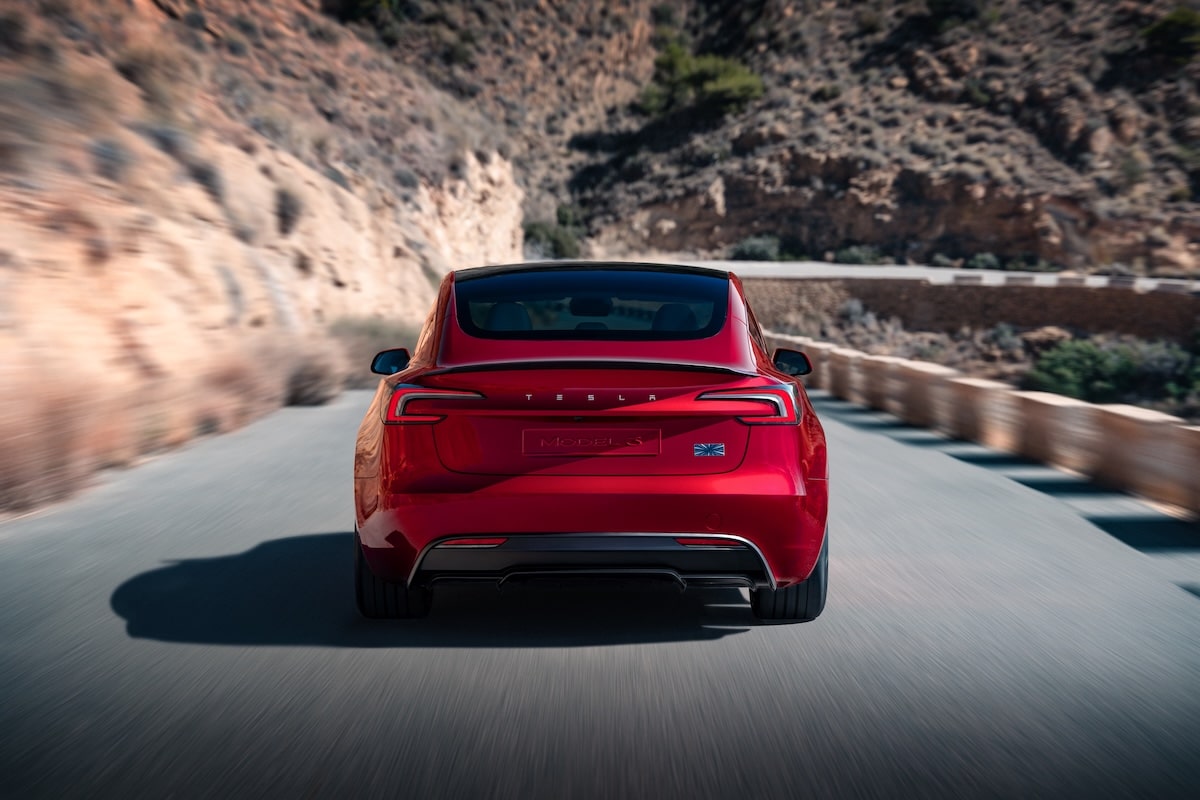Why do Tesla cars prematurely wear out their tires?

By philosophy, Tesla uses chassis adjustments that ensure great stability, but the tires are put under significant strain.
When browsing the forums for Tesla owners, one common observation stands out: the tires, especially at the rear, wear out unusually quickly… and often asymmetrically, with the inside smooth while the outside seems intact. This situation raises concerns, especially given the price of these performance tires. Shifting the fuel bill to tires is rather amusing. The cause? Design choices made by the manufacturer, related to the chassis geometry.
On the Facebook group Tesla Model 3 in French, we find the case of Anthony Menvielle whose rear tires are so worn that a puncture forced him to stop. See his photo below:

You might be interestedin this article:
An unusual weight and torque
Like all electric cars, Tesla must deal with a very heavy battery pack. A Model S Plaid exceeds 2.1 tons, and the more compact Model 3 Performance is also close to 1.9 tons. This weight is coupled with a colossal instantaneous torque: up to 1,000 Nm on some versions.
These features require a specific adjustment of the suspension and the geometry of the running gear to maintain safe handling.
Camber refers to the tilt of the wheels relative to the vertical. On Tesla, sporty or not, it is pronounced, especially at the rear, with wheels tilted inward at the top (negative camber). In a straight line, this adjustment reduces the tire’s contact patch with the ground, concentrating the load on the inner shoulder. The consequence: a slight increase in rolling resistance (thus a marginally reduced range) and asymmetrical wear. In a turn, however, the tire “stands up” due to body roll, regaining an optimal contact patch and ensuring excellent grip. Tesla has therefore sacrificed some energy efficiency and tire longevity in favor of safety and stability.
The toe angle: an aggravating factor
The other key parameter is the toe angle. It corresponds to the horizontal angle of the wheels as viewed from above. The wheels slightly converge toward the inside. This stabilizes the car in a straight line and secures the rear end, but at the cost of increased wear and slightly higher consumption. Sometimes, manufacturers opt for the opposite effect: toe out.
With toe out, the wheels diverge outward, making the steering livelier but unstable at high speed. At the rear, it is almost always avoided.
On Tesla, the rear axle combines negative camber + toe in. This duo enhances stability (limits oversteer) but further concentrates the stress on the inside of the tires. Result: wear can sometimes be rapid, with some owners seeing their tires compromised after less than 20,000 km without having driven abnormally fast in turns.
A compromise accepted by Tesla
It can happen that some Tesla have poor chassis settings from the factory, as the lack of seriousness from the American manufacturer is not a legend. But most of the time, premature wear is indeed part of the genes of Tesla vehicles. When it comes to chassis tuning, it’s all a matter of compromise. Tesla has prioritized safety and road handling, which are essential for managing the weight and power of its models.
Some customers go outside the Tesla network to adjust their car’s suspension settings, risking a less natural handling but less tire consumption.
Finally, it should not be forgotten that Tesla is still a very young manufacturer and that customers are no longer buying their car: they are leasing it, with maintenance included. This aspect of tires is “invisible” to them most of the time.
European manufacturers, being more established, have a greater mastery of all the subtleties of the road connection. A domain that is absolutely scientific. Tesla will continue to improve, and their latest generations already seem to be less demanding on tires.
ALSO READ: Tesla Model Y L with 6 seats already marketed, here is its price
This page is translated from the original post "Pourquoi les Tesla usent précocement leurs pneus ?" in French.
We also suggestthese articles:
Also read





